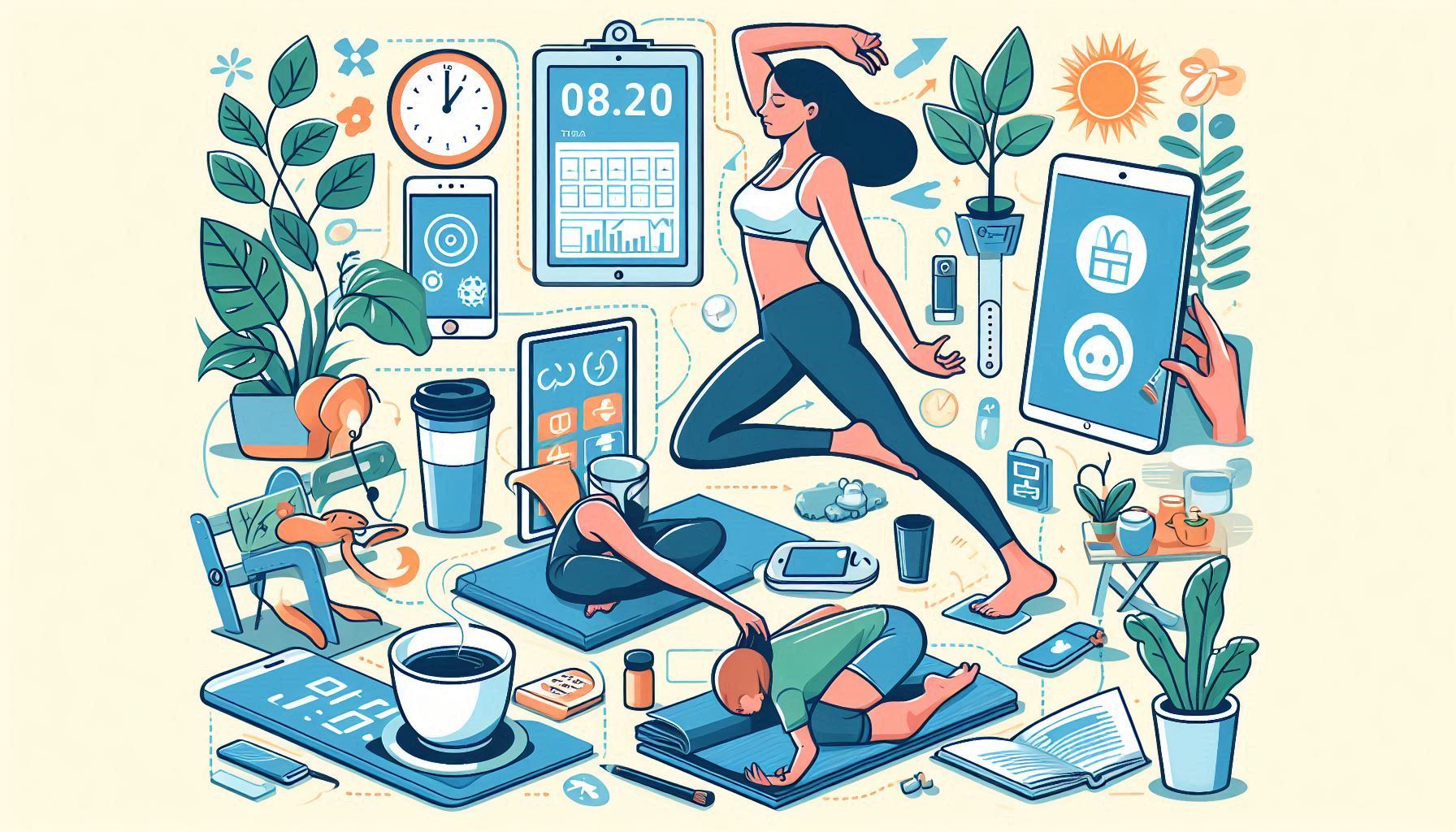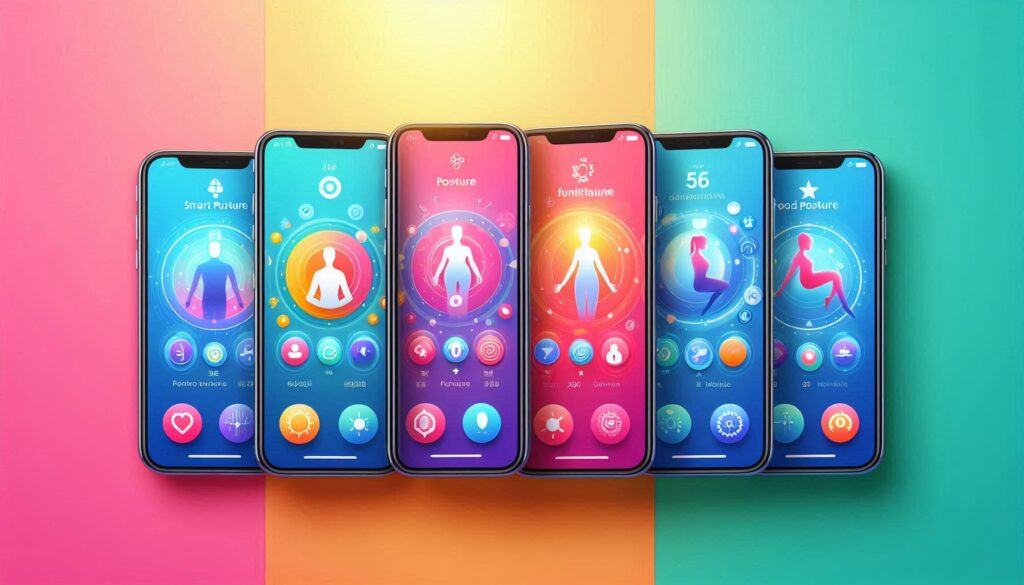Welcome to this article and today we shall be be looking at the best 5 smart posture apps to boost health. Keeping your posture in check isn’t just about looking sharp. It’s all about feeling healthier, working better, and carrying yourself with more confidence. With long hours spent at desks, scrolling through phones, or powering through school assignments, I often find my posture can slip without even noticing.
Smart posture apps come in handy for anyone aiming to keep an eye on their alignment and get friendly reminders or training straight from their phone. I’ll walk you through what these apps do, key benefits, and my five favourite picks to help you sit and stand tall. Without making posture feel like a boring chore.
Why Good Posture Matters for Health and Confidence
Paying attention to posture gives you more than a straight back in photos. It impacts daily comfort, focus, and even your stress levels. When I sit up tall, my breathing gets easier and my mood gets a subtle boost. Medical studies have connected good posture with reduced back and neck pain, fewer headaches, and less fatigue. Slumping can send signals to your brain that you’re tired or not interested, while standing tall is often just enough to help you feel more self-assured.
On the confidence side, people naturally come across as more energetic and ready for challenges when they carry themselves with strong posture. For folks chained to computers or logged into video calls for hours, posture apps really help catch bad habits early before they lead to long term pain or breakdowns in focus. Not to mention, social psychologists have found that proper posture can positively influence how others perceive your confidence and approachability.
The Basics: How Smart Posture Apps Work
Smart posture apps use your phone’s sensors, your camera, or sometimes wearables to spot when you’re slouching. Some check your alignment all day and send gentle reminders, while others coach you through exercises and stretches. A few even sync up with fitness trackers or smartwatches for more precise guidance, letting you track progress in a super detailed way.
If you’re new to these apps, here are a few terms you’ll probably notice:
- Real-Time Feedback: The app lets you know right away if you’re out of position.
- Habit Tracking: It logs how often you sit, stand, or move so you can spot patterns or see where you might step things up.
- Exercise Routines: These are step by step guides or short videos to strengthen your core and give a boost to flexibility for better posture.
Getting Started With Smart Posture Apps: 5 Steps That Help
Most smart posture apps don’t require extra gadgets. Some do pair better with a smartwatch, but all you actually need is your smartphone. Here’s how I usually get started:
- Download Your Chosen App: Begin with a free choice to test out reminders and workout tips, then upgrade if you really like what it offers.
- Check Permissions: A lot of apps need access to your camera or movement data. Make sure you’re good with the permissions you give.
- Personalize Settings: Decide how often you want reminders and what type. A buzz, sound, or on screen notification, so it matches your work or school rhythm.
- Try Out Assessments: Some apps ask you to film yourself for a quick alignment check. This helps establish a good starting line.
- Use Short Workouts: Even a five minute stretch during a break can do wonders for how you feel by the end of the day.
These small efforts stack up. Most folks feel a difference in comfort and focus within just a week or two of sticking to the app’s tips and reminders. Over time, these new habits really settle in, making good posture much easier to maintain without constant thought.
My Best 5 Smart Posture Apps To Boost Health
Not all posture apps deliver the same results, so it pays to pick one with features you’ll actually want to use. Here are my five favourite smart posture apps, with notes on what makes each one special and who might find them the most helpful.
1. Upright GO Companion App
The Upright GO app is tailored to work with the Upright GO wearable sensor, but it offers valuable tracking and tips from your phone too. It keeps track of both sitting and standing posture, with easy training sessions to fit busy schedules.
- Key Features: Real time posture alerts, daily progress stats, and tailored training plans built just for you.
- Why It’s Worth Checking Out: The reminders are flexible, and the positive streaks and rewards encourage healthy competition, even with yourself.
2. Posture Reminder – Breaks and Ergonomics
This app is all about simple reminders. You set how often it nudges you to sit up straighter or take a quick break. No movement sensors here. It’s old school habit building. I like using it when I know I’ll be deep in work and at risk of forgetting to move.
- Key Features: Personalized reminder times, break timer, logs for sitting versus standing.
- Why It’s Worth Checking Out: Lightweight and careful about privacy. A great choice if you’d rather not share extra data.
3. PostureZone
PostureZone uses your phone’s camera for a fast check up. It overlays visual lines so you can see if your head, neck, or shoulders are off balance and then stores a visual report to track your improvement.
- Key Features: Visual assessments, before and after tracking for each check up, and reference guides you can follow to reset your position.
- Why It’s Worth Checking Out: Perfect for visual learners who like to see photos instead of just reading data.
4. Stand Up! The Work Break Timer
Stand Up! keeps things easy. The main goal is to get you out of your seat, with reminders at whatever interval you set. It doesn’t get into detail with posture measurement, but if you want to move more and spend less time sitting, it really works.
- Key Features: Custom intervals, gentle notifications, can sync with calendar apps for smooth scheduling around meetings and deadlines.
- Why It’s Worth Checking Out: Perfect if you just want that little nudge to take breaks, without going overboard on alerts.
5. ALEX+ (by Namu Inc.)
This app links to a futuristic collar like wearable, but it works for guidance and tips even without the hardware. It gives bio feedback by buzzing gently when you start to slouch, so you spot and fix mistakes in real time.
- Key Features: Quick alerts, habit tracking over time, a library of posture advice and tips for sitting or moving.
- Why It’s Worth Checking Out: That combo of buzz-based reminders and a detailed log is perfect if you’re serious about building healthy habits for the long term.
What To Watch Out For Before Picking a Smart Posture App
Picking the right smart posture app depends on what you need most, reminders, detailed analysis, or just a quick reason to move. Check out these points before committing:
- Data Privacy: Some apps need access to your camera or health data. Always double check privacy settings and permissions before you push “accept.”
- Realistic Notifications: If tons of alerts wear you down, pick an app where you control frequency or choose one solely focused on break reminders.
- Compatibility: Make sure the app fits with your device or any smartwatches you already use. Some need Apple or Android, while a few only run with their own sensors.
- Expert-Backed Guidance: Apps from physical therapists or trainers are often safer and offer more useful advice compared to those from just tech companies.
Doing some homework helps you pick something you’ll be happy to use. That’s really important if you love the app. You’ll actually stick with it, giving yourself the best shot at lasting improvement.
Data Privacy
I always look for clear privacy policies and flexible permissions before installing any app that tracks health or body data. Using top rated and regularly updated apps also cuts the risk of sharing more than you intended. You should do this with all apps. Not just the smart posture apps.
Notifications
Some people want posture checks every 15 minutes, while others do better with just a gentle nudge each hour. Pick whatever feels right for you, so you don’t wind up ignoring alerts altogether.
Expert Reviews and Advice
I tend to trust smart posture apps more if they’ve got physical therapist guidance or fitness trainer insights. When an app offers health advice, scientific references or a visible link to professionals usually means their tips are safer and more practical. You can usually track down this information on their site or in the app description.
Tips To Make Smart Posture Apps Work Better For You
Even the best smart posture app won’t help if you forget about it or turn off notifications after two days. Here’s what works for me to stick with new habits and make real changes:
- Pair Reminders With Something Routine: For example, check posture every time you grab some water or check your email inbox.
- Add in Mini Stand and Stretch Breaks: A break timer gives you the excuse to quickly stretch or take a walk, which helps your posture naturally reset.
- Track Your Progress Weekly: Celebrate the small wins! Apps that use streaks or simple stats make it more satisfying to see your improvement.
- Try Before and After Pics: If the app allows selfies or picture logs, use it to track visible change. You might be surprised what a difference a week makes.
Habits feel easier to stick with when they connect to your everyday life. It’s not about being perfect. It’s about getting a bit better each day and feeling the rewards build up over time.
Frequently Asked Questions
If you’re curious about smart posture apps or hitting roadblocks, here are some questions that come up a lot:
Question: Can a phone app really help my posture, or do I need extra gadgets?
Answer: A phone app alone can do plenty including sending reminders, offering tips, and tracking progress. Wearables can give real time feedback but aren’t needed for most people to see real changes.
Question: Are posture apps safe to use for anyone with back or neck pain?
Answer: Most apps are fine for people with mild discomfort, but if you have an injury or serious chronic pain, ask your healthcare provider before starting new exercise routines.
Question: Will posture apps drain my battery or need WiFi all the time?
Answer: Most apps use very little power, but those that rely heavily on camera or sensors might use more battery. Many work offline, but syncing data may require an occasional internet connection.
Moving Forward With Better Posture
Building healthy posture habits doesn’t come from making huge changes overnight. Smart posture apps help by breaking improvement down into smaller steps, fitting changes smoothly into your daily routine. Whether you’re at work, in the classroom, or traveling. With the right app and a bit of patience, you’ll start to feel clearer, stronger, and more confident. Trust me, your back and your future self will thank you for the effort you put in today!
Thankyou so much for reading through this article on the best 5 smart posture apps to boost health. I hope that you have found it both helpful and informative. Why not take a look through our blog? We have lots of really helpful articles. You might enjoy our related article titled Top 10 Best Posture Correctors 2025.
**Here is a bit of transparency. Our website www.vertevia.com does contain affiliate links and Amazon links. So, if you did make a purchase through the website, we may receive a small commission. This is at no extra cost to you whatsoever. It’s just a way for you to support us as we continue to bring you top quality content**
All the best!
Eamon



